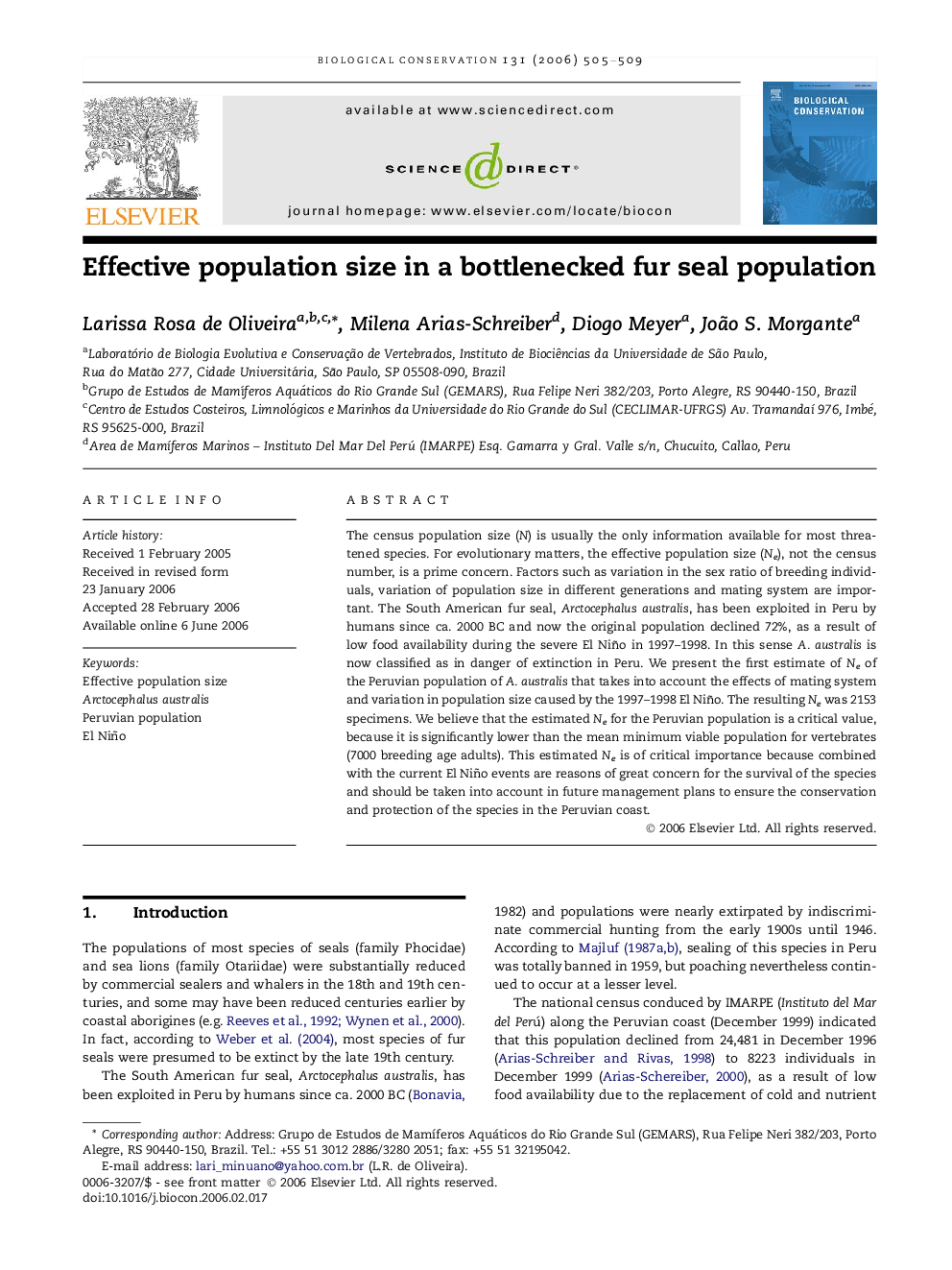| Article ID | Journal | Published Year | Pages | File Type |
|---|---|---|---|---|
| 4387511 | Biological Conservation | 2006 | 5 Pages |
The census population size (N) is usually the only information available for most threatened species. For evolutionary matters, the effective population size (Ne), not the census number, is a prime concern. Factors such as variation in the sex ratio of breeding individuals, variation of population size in different generations and mating system are important. The South American fur seal, Arctocephalus australis, has been exploited in Peru by humans since ca. 2000 BC and now the original population declined 72%, as a result of low food availability during the severe El Niño in 1997–1998. In this sense A. australis is now classified as in danger of extinction in Peru. We present the first estimate of Ne of the Peruvian population of A. australis that takes into account the effects of mating system and variation in population size caused by the 1997–1998 El Niño. The resulting Ne was 2153 specimens. We believe that the estimated Ne for the Peruvian population is a critical value, because it is significantly lower than the mean minimum viable population for vertebrates (7000 breeding age adults). This estimated Ne is of critical importance because combined with the current El Niño events are reasons of great concern for the survival of the species and should be taken into account in future management plans to ensure the conservation and protection of the species in the Peruvian coast.
